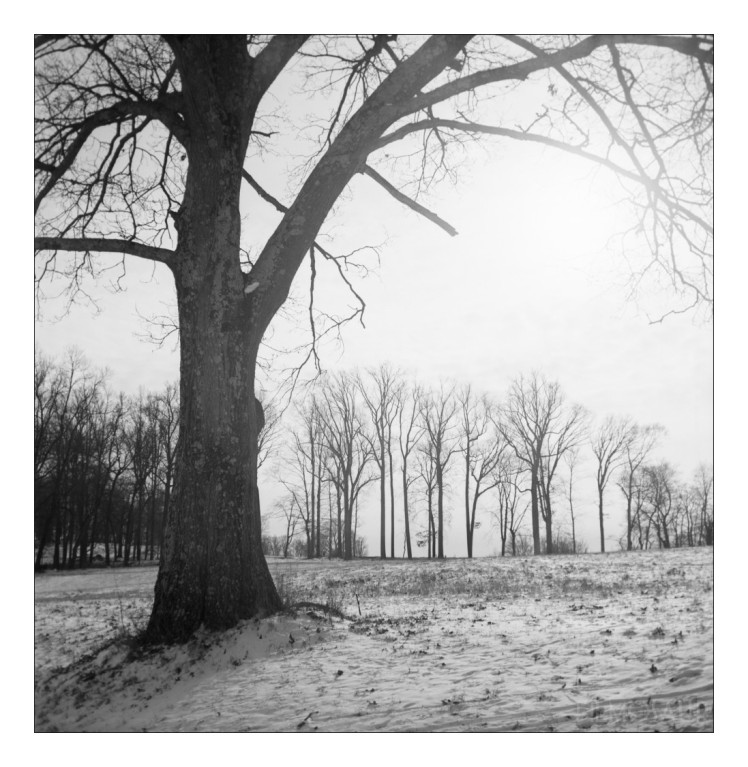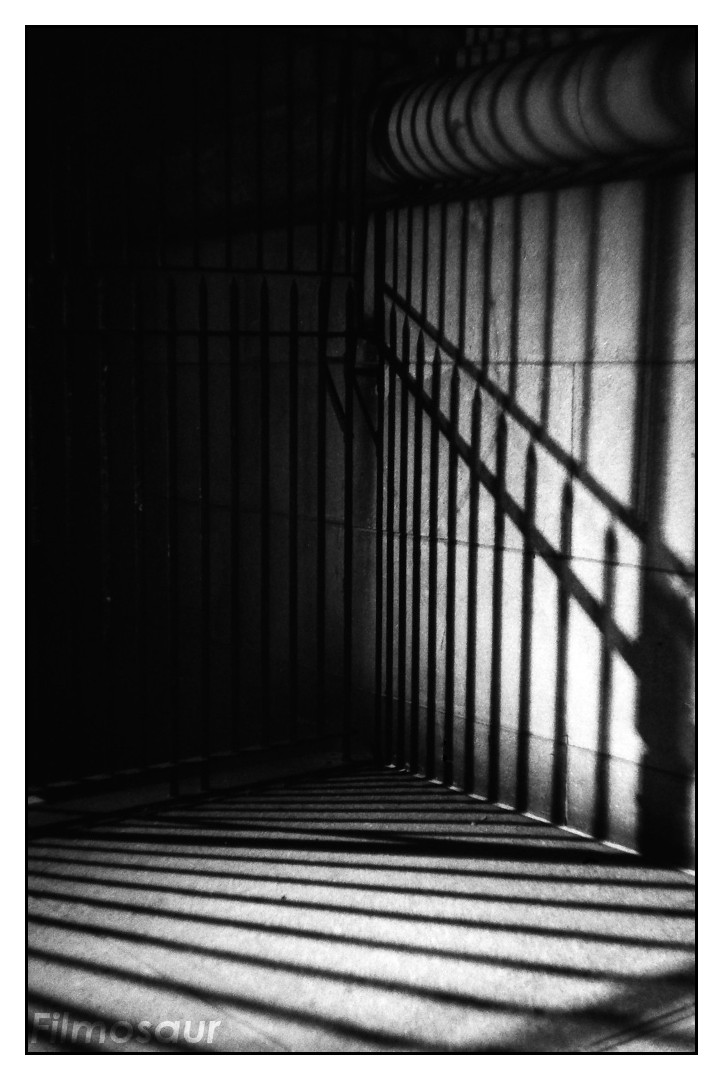A Tale of Two Box Cameras
Pity the poor, much-maligned box camera. For decades it was the means by which millions of people took photographs, enabling the untrained masses to do what had once been the sole purview of professionals with expensive, complicated equipment. To make this mass movement possible, the box camera had to include some compromises. Shutter speeds? Those are complicated, aren’t they? Aperture setting? What’s that? Focusing? Ugh, that sounds hard.
At their most basic, box cameras took away virtually all the potentially confusing choices and replaced them with a level of enforced conformity that would make a totalitarian dictator all warm and fuzzy. One speed, one aperture, fixed focus, and done. As long as you remembered to wind the film and pointed it in the right general direction, you’d get a photo. Sure, some got all crazy and added an extra aperture setting or a close-up lens, or heaven forbid, more than one speed or an actual focusing mechanism. But most of them were the camera equivalent of a pointy stick or an appropriately-shaped rock: the simplest tool for the job at hand.
There’s a purity of sorts to shooting with a box camera. With all the technical decisions made for you, you can concentrate all your attention on making the photograph. In 1962 in a letter to Pop Photo magazine’s features editor, Hunter S. Thompson wrote “Any man who can see what he wants to get on film will usually find some way to get it; and a man who thinks his equipment is going to see for him is not going to get much of anything.” The box camera is the ultimate test of this view, and in my experience it validates Thompson’s argument. That a photographer toting $10,000 worth of top-of-the-line equipment can take a technically competent photograph tells me nothing about their skill and vision as a photographer; hand them a box camera and see what they can do.
I’ve had a couple of box cameras for years, both Kodaks: a 1930s-vintage Six-20 converted to pinhole, and a Brownie Hawkeye from the 1950s in which I’ve reversed the lens for dramatic effect. The Six-20 is made from heavy steel, has one speed (plus B – fairly useless without a cable release hook-up, which the camera lacked before I added it) and one aperture, a tiny little straight-through viewfinder, and shoots a 6×9 negative (against a curved film plane no less – pretty advanced stuff, though it was probably included because it was cheaper than fitting a better lens). The Hawkeye is Bakelite plastic, employs a more traditional top-down box camera viewfinder, and makes a 6×6 square negative, but otherwise is very similar in function to the earlier Six-20. Both were capable of producing perfectly adequate photos in their respective original, unmolested, meniscus lens-equipped forms; one of my motives for reversing the lens on the Hawkeye was that I felt the photos it originally made weren’t “box-cameray” enough.
Fast forward to recent months. In quick succession I acquired two more box cameras, less by design than opportunity and my well-documented inability to resist cheap. One is another Brownie Hawkeye, which I certainly did not need, but I figured I could have one with the lens reversed and one with it in its usual orientation (I’ve got another idea for this one, but time will tell if that comes to pass). It was in good shape and an early example (glass lens, metal winding knob), which I prefer (apparently I’m a box camera snob). The second is a new entry, an Ilford Craftsman, one of the more advanced box cameras of the post-war era. With their arrival, it seemed a good opportunity to revisit the box camera genre.

The new Hawkeye is, well, just like the old Hawkeye. By the 1950s Kodak had pretty well dialed in the box camera formula. It’s very intuitive, the controls are nicely weighted (for a plastic box camera) and well-placed, the viewfinder is bright (but small), and it just looks good. The shutter fires somewhere around 1/40, and the aperture is something like f/11 (no point in getting specific with a camera intend for people who prefer not to think about these things). With ISO 100 film you’re good for sunny days; if you need more speed, you need faster film.
Photos from the Hawkeye are surprisingly good technically. Contrast is on the low side, as you would expect, but resolution in the center really isn’t bad at all, at least for 4x enlargements give or take (which would be a 10″x10″ print). How much bigger do you think most people are going to print? For a contact print, which would have been the most likely end for most box camera negatives, they are more than adequate. Sure, the corners get fairly soft, but seriously, who cares? How many genuinely good photos have you looked at and said “Yeah, it would be a great shot if the corners were sharper”?

On to the Ilford. Superficially, it’s taller than the Hawkeye, but it’s the same sort of rectangular Bakelite body shooting 6×6 squares. The Kodak is a better-engineered package; the Ilford feels like certain things were afterthoughts, like the hinges that hold the back to the body. Made in England in the late 1940s and early 1950s, it’s construction unsurprisingly reminds me of English sports cars of the same era: a bit cobbled together, but I’m sure it will all work out in the end. Probably.
But like those sports cars, the end result is greater than the sum of the parts. The Craftsman offers more features and refinements than the Hawkeye. The viewfinder is much larger and equally bright and has a pop-up hood for shade, making for a nicer and easier shooting experience. Where the Kodak offers a lowly meniscus, the Craftsman’s lens is a cemented doublet. The biggest difference lies in the fact that the Ilford gives the user – wait for it – choices! Unlike with the Hawkeye, the photographer has a selection of two shutter speeds (1/25 and 1/75, plus the ubiquitous B) and two apertures (f/9 and f/18), and on top of that – hold on to your hat – adjustable focus! Is this photography or rocket science?!
What’s remarkable is that the settings actually have an effect on the photographic output. The focus, which is infinitely adjustable from 4 feet to infinity, does what focus does – no surprises there. The difference in shutter speeds is noticeable, or at least it was after I cleaned and lubed the mechanism. It’s not a big difference (nominally one stop), but it’s there. The aperture is where the real change happens. At f/18, the photos show similar character to those from the Hawkeye: decent central sharpness, going softer toward the corners, with a bit more contrast than the Kodak manages. At f/9, however, things go softer across the board (though the center is still reasonably well-defined), contrast falls away, out-of-focus areas can get a little swirly in certain conditions. It’s deeply flawed and it’s glorious.

The Ilford, especially at f/9, achieves something the Brownie Hawkeye never quite manages – unique character. When I look at Hawkeye photos, I have to check to see what camera produced them; shots from the Craftsman are instantly recognizable, particularly those at the wider aperture. Sure, you can reverse the lens on the Hawkeye, but the level of distortion that produces is very much a specialty effect.
So what’s the point of all this? Well, nothing profound really, as befits the subject. Box cameras are cheap, easy fun. Some are “better” than others, but that’s a pretty subjective term in the best of circumstances. Both of the cameras discussed here have their charms, as I’m sure do many others. Using them from time to time helps to remind photographers of what really matters: it’s not the equipment, it’s how you use it.
















You must be logged in to post a comment.